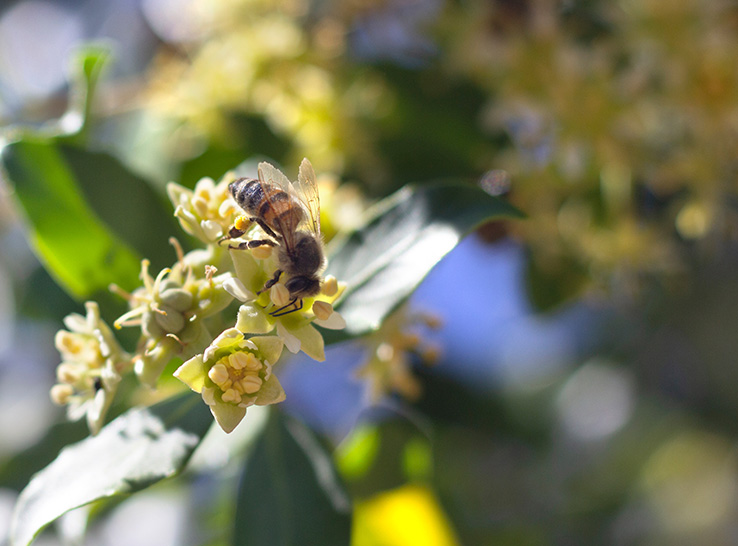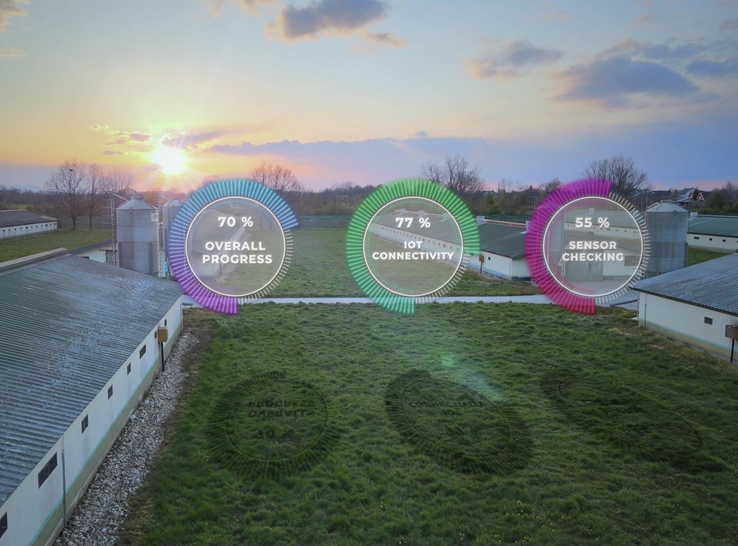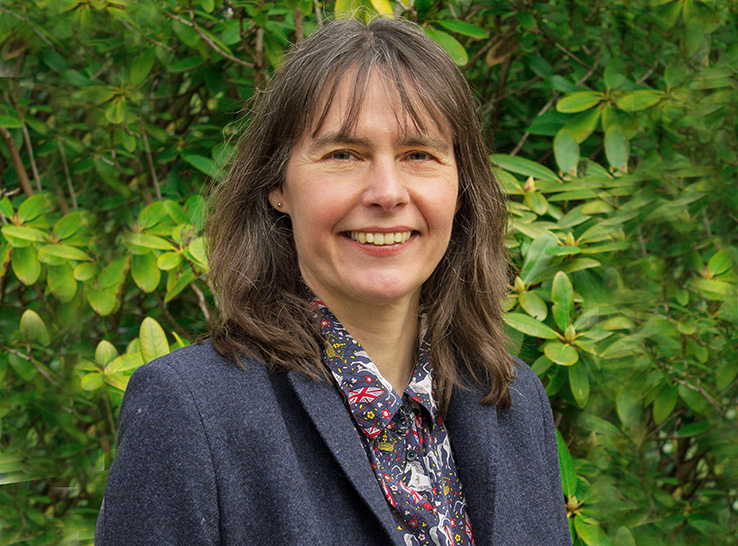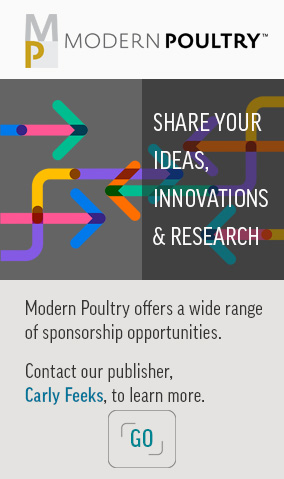Technology is part of everyday life in a poultry house, and it has helped the industry achieve production goals efficiently, sustainably and with more speed than imagined. But with these technological advances, animal agriculture is on the cusp of a major change.
“We are in the early stages of a revolution in how we intersect with animals through technology,” said Marian Stamp Dawkins, FRS, CBE, emeritus professor of animal behavior, University of Oxford. “It’s impossible to know where this is going or the implications for animal welfare.”
Technology covers a broad field. In a presentation at the May 2025 Poultry Extension Collaborative virtual symposium, Dawkins outlined areas that must be addressed, as well as the pros and cons of future technology in the poultry industry.
“The poultry industry is crying out for new technology, and we are just beginning to scratch the surface,” she noted.
Such advancements will be key in the coming years, as annual global broiler production is projected to exceed 70 billion. Producers will be expected to produce more with less — less medication, labor, waste and environmental impact. Used correctly, current and future technologies will help achieve those goals.
Considering the pros and cons
There’s no silver bullet to address all of poultry production’s needs, but the potential benefits of technology to bird welfare and production are striking, Dawkins said.
Among the positives are sensors that can continuously monitor bird health and welfare, measuring behavior, movement, vocalizations, temperature, metabolism and weight, among other factors. This leads to earlier detection of problems and quicker interventions, resulting in higher health status and a reduced need for medication.
Big data and AI can be used as diagnostic tools, as well as to make management decisions and uncover best and worst practices, she noted. There’s the opportunity to design facility environments that optimize bird health and comfort and allow birds to express behaviors that are important to them.
But there are potential drawbacks. “It’s necessary to stress that technology could also threaten bird welfare,” Dawkins said. Technology could encourage greater production intensification, leading to larger group sizes, reduced human contact and, ultimately, damage to bird welfare.
“These things could cause a backlash from the public,” she added.
Building assurances
Currently, technology’s ability to improve welfare is a promise only; it has not yet been demonstrated, and producers need assurances, Dawkins said.
To provide that assurance, the industry must define welfare in a way that has public and scientific support and is measurable. It must also develop technology that delivers animal welfare and demonstrate that this technology delivers value to the bird, the farmers and the public. “Doing these things would change the promise to actuality,” she noted.
To define animal welfare, Dawkins said it’s reasonable to start with the Five Freedoms and/or the Five Domains. “But these are aspirational. How do you capture these into algorithms that could be processed by computers to identify outcomes?” she asked. “We must bring it down to earth a bit. The essence of welfare is that animals are healthy, and they have what they want.”
Using those two criteria, she contends that developing technology to measure animal welfare starts with animal health. “Currently, animal health is assessed largely through post-mortem exams, and that’s delayed information. The welfare of living birds is assessed with only occasional audits, and those are labor intensive, subjective, a biosecurity risk and limited to a snapshot of one day,” Dawkins added.
A continuous, objective assessment
One such technology that benefits bird welfare, health and production is OpticFlock, which Dawkins and Oxford Computer Consultants developed at the University of Oxford. Designed for commercial broiler flocks, OpticFlock uses a simple closed-circuit TV camera linked to a computer to assess anomalies in flock movement. Using immediate local-image processing, an algorithm delivers a health and welfare “verdict” to a computer or smartphone. “It is very secure,” Dawkins pointed out. “No image leaves the farm.”
Because it delivers flock-level information, OpticFlock is particularly helpful in broiler systems for making decisions on vaccinations, drinker height, lighting, and other health and welfare concerns. “Flock movement patterns vary with flock health, and that variation tells you a lot,” she noted. “Unhealthy flocks move less and have greater variation in movement patterns (kurtosis).”
Dawkins cited a study involving two poultry companies. OpticFlock cameras were used to evaluate Campylobacter-free flocks and commercial flocks. For both companies, the Campylobacter-free flocks had a higher mean (more movement) and lower kurtosis (less variation or outliers) versus the companies’ other broiler flocks.
“This difference occurred when birds were less than a week old,” she pointed out. “You could identify which flocks would go on to develop Campylobacter long before they were symptomatic. So, not only did OpticFlock detect Campylobacter, it also predicted it.”
In another example in which flocks had final hock-burn scores of 70% versus 0%, the differences were clear by the first week of broiler placement. “You could anticipate what was going to happen weeks later,” she said. “With this process, farm staff can see day to day how things are changing.”
What do birds want?
Technology can also make significant advances in the second essential factor of welfare: Do birds have what they want? It can help producers understand what the birds want and how they express emotions, thereby providing information that can be used to design environments that meet the animals’ preferences.
“In the past, we’ve attempted to do this by reviewing hours of video footage,” she said. “But technology can provide that data, such as a quantitative assessment of resource use and interactions with other animals. It will give us much more data.”
For example, technology can determine whether broilers want to perch. What sort of perches do they want? How does roosting differ between male and female chicks? Does it vary with age or at night versus daytime?
“This is an animal-centered way of defining welfare. Let the animal tell you what it finds rewarding or pleasurable versus an environment that it finds stressful, boring or frightening,” Dawkins said.
To help manage all that data, AI will be able to consider all the inputs together — bird sounds, movement, weights, lighting, etc. — and evaluate those factors for animal welfare and production output. It could compare farms for best practices and identify things that should no longer be used. Technology could also determine the best environmental designs, identify causes of problems or designate national and international standards.
“We have not yet begun to explore these things,” she said. “We could make decisions based on a single farm or thousands of farms. Data quantity will not be the problem, but data quality will always be important.”
Need producer buy-in
Although bird welfare is important to anyone involved with broiler production, for widespread technology adoption, there must be a payoff. “If we don’t address farmers’ needs, they will not adopt the technology, and if the technology isn’t used, it won’t benefit the animal.”
Dawkins pointed to a Global Farmer Insights survey conducted in 2024 by McKinsey and Company that presented five takeaways:
- Farmers are adopting ag technology but slowly.
- Adoption is correlated with return on investment, and they don’t see that yet.
- Farmers are put off by high costs.
- Technology must be easy to install and use.
- Ag technology must demonstrate short-term net benefits.
Dawkins is hopeful that technologies will continue to evolve and provide a win-win for both animal health and welfare and the producer. “We need to stress the win-win prospects,” she said. For example:
- Reduced mortality = less waste and more product to sell.
- Lower injury levels = higher quality and more efficient birds.
- Reduced disease levels = less need for medication.
“There is a lot of overlap, but we must recognize that welfare-driven actions do not always result in efficiencies. The potential that technologies offer is enormous, but producers can’t afford to adopt something that has not demonstrated results,” Dawkins said. “We must consider the producers’ needs. After all, they are going to have to pay for, clean and manage the technology.”






